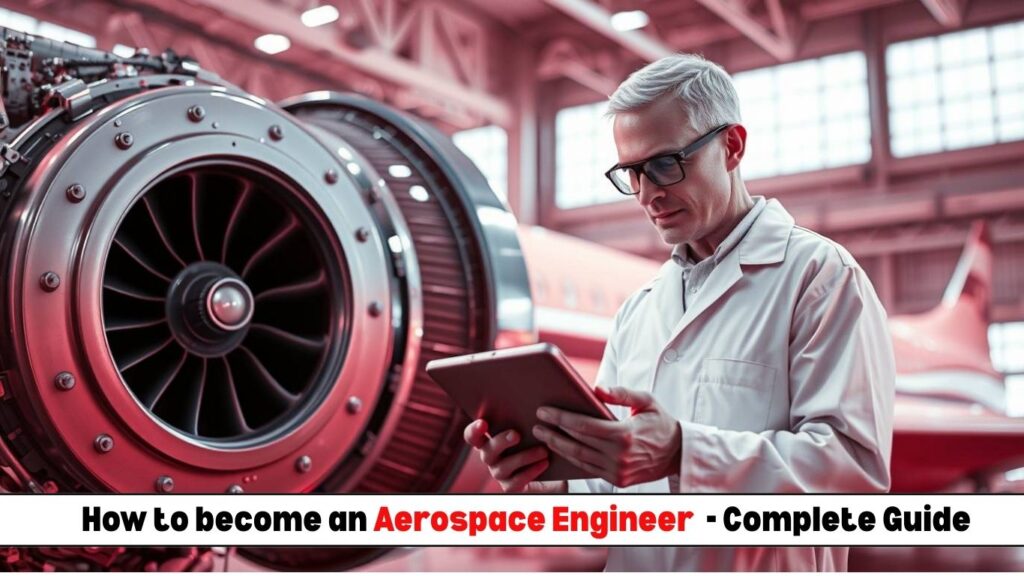
Introduction
Aerospace Engineers are the pioneers of modern aviation and space exploration, designing aircraft, spacecraft, satellites, and missiles. From commercial airplanes to Mars rovers, these professionals push the boundaries of technology and human achievement.
This comprehensive guide covers:
✅ History of Aerospace Engineering
✅ Salary Expectations (Aeronautical vs. Astronautical)
✅ Key Roles & Responsibilities
✅ Essential Qualifications & Skills
✅ How to Get Started (Step-by-Step Guide)
✅ Future Trends & Job Outlook
Let’s explore this high-flying career in detail!
1. The History of Aerospace Engineering
Early Beginnings (Pre-20th Century)
- Ancient Civilizations: Early concepts of flight emerged in China (kites) and Greece (Archytas’ steam-powered pigeon).
- 1480s: Leonardo da Vinci sketched early flying machines.
- 1783: The Montgolfier brothers launched the first hot-air balloon.
Birth of Modern Aerospace (1900s-1950s)
- 1903: Wright Brothers achieved the first powered flight.
- 1920s-30s: Golden Age of Aviation—commercial airlines emerged.
- 1940s: World War II accelerated jet engine development (Messerschmitt Me 262).
- 1957: Sputnik 1 (first artificial satellite) sparked the Space Race.
Space Age & Modern Era (1960s-Present)
- 1969: Apollo 11 landed humans on the Moon.
- 1980s-90s: Space Shuttle program revolutionized reusable spacecraft.
- 2000s-Present: Rise of private space companies (SpaceX, Blue Origin) and Mars exploration (Perseverance Rover).
Today, aerospace engineers work on hypersonic jets, satellite constellations, and interplanetary missions.
2. Aerospace Engineer Salary Expectations
Salaries vary by specialization, experience, and sector:
| Experience Level | Average Salary (Annual) |
|---|---|
| Entry-Level (0-2 yrs) | $70,000 – $90,000 |
| Mid-Level (3-7 yrs) | $90,000 – $120,000 |
| Senior-Level (8+ yrs) | $120,000 – $160,000+ |
| NASA/SpaceX Engineers | $100,000 – $180,000+ |
Top-Paying Industries
✔ Spacecraft & Satellite Manufacturing ($110K – $150K)
✔ Defense & Military Aviation ($95K – $140K)
✔ Commercial Airlines ($85K – $130K)
✔ Private Space Companies (SpaceX, Blue Origin) ($100K – $200K+)
Note: Advanced degrees (Master’s/Ph.D.) and security clearances boost salaries.
3. Roles & Responsibilities of an Aerospace Engineer
Aeronautical Engineers (Work on Aircraft)
✔ Design wings, propulsion systems, and flight controls.
✔ Test aerodynamics in wind tunnels.
✔ Ensure fuel efficiency and safety compliance (FAA regulations).
Astronautical Engineers (Work on Spacecraft)
✔ Develop rockets, satellites, and space stations.
✔ Solve zero-gravity engineering challenges.
✔ Optimize re-entry thermal protection systems.
Common Responsibilities
- Research & Development (R&D) of new technologies.
- Computer-Aided Design (CAD) using SolidWorks, CATIA.
- Simulations & Testing (CFD analysis, structural stress tests).
- Collaboration with pilots, scientists, and manufacturers.
4. Qualifications & Skills Required
A. Educational Background
- Bachelor’s Degree in Aerospace, Mechanical, or Electrical Engineering (ABET-accredited).
- Master’s/Ph.D. for R&D or space exploration roles.
B. Licenses & Certifications
✔ Professional Engineer (PE) License (for consulting roles).
✔ FAA Aircraft Maintenance Certifications (for aviation specialists).
C. Technical Skills
✔ CAD Software: SolidWorks, AutoCAD, ANSYS
✔ Programming: MATLAB, Python, C++
✔ Aerodynamics & Propulsion Systems Knowledge
D. Soft Skills
✔ Problem-Solving & Analytical Thinking
✔ Teamwork & Communication
✔ Attention to Detail (safety-critical designs)
5. How to Get Started as an Aerospace Engineer
Step 1: Earn a Bachelor’s Degree
- Major in Aerospace Engineering or related fields.
- Join AIAA (American Institute of Aeronautics and Astronautics).
Step 2: Gain Hands-On Experience
- Intern at Boeing, Lockheed Martin, or NASA.
- Participate in student competitions (Design-Build-Fly, Rocketry Clubs).
Step 3: Build Technical Skills
- Master CAD, CFD, and programming tools.
- Work on personal projects (drones, model rockets).
Step 4: Apply for Jobs
- Entry-Level Roles:
- Aerodynamics Engineer
- Systems Engineer
- Flight Test Engineer
Step 5: Advance Your Career
- Pursue a Master’s/Ph.D. for NASA or SpaceX roles.
- Obtain security clearance for defense projects.
6. Future of Aerospace Engineering
Emerging Trends
🚀 Hypersonic Travel (Mach 5+ passenger jets).
🚀 Space Tourism (Virgin Galactic, Blue Origin).
🚀 Satellite Mega-Constellations (Starlink, OneWeb).
🚀 Mars Colonization (SpaceX’s Starship, NASA Artemis).
Job Outlook
- 6% growth by 2030 (as fast as average).
- High demand in private space companies and defense.
Final Thoughts: Is Aerospace Engineering Right for You?
This career is ideal if you:
✓ Love aviation, space, and cutting-edge tech
✓ Enjoy math, physics, and problem-solving
✓ Want to work on history-making projects
Pro Tip: Specialize in AI-driven aviation or reusable rockets for future-proof skills.
Ready for Takeoff?
📌 Comment below for scholarship & internship resources!
📌 Share this guide with aspiring engineers!













Post Comment